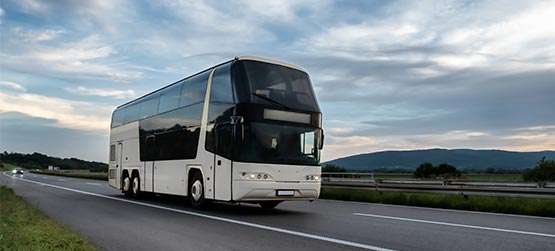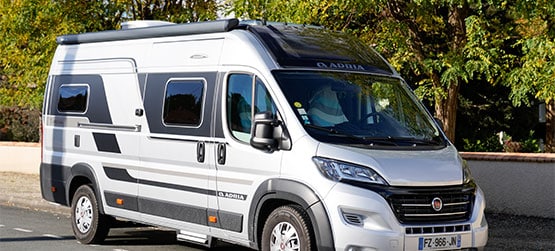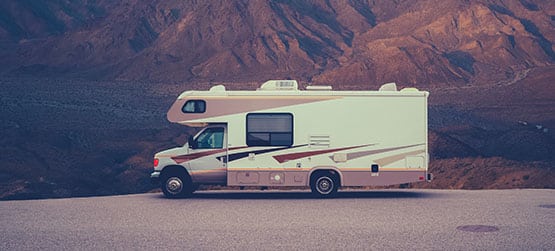Were You Injured In An Accident Caused By The Other RV Driver?
Here Are The Steps To Take:
If you or a loved one were injured in an RV accident, our law firm is here to help. We understand that being involved in a motorhome or camper van collision can be traumatic and confusing. Our experienced motorhome accident attorneys will fight for justice on your behalf.
Seek Immediate Medical Assistance After The Accident
Your first priority after being involved in an accident is to seek medical assistance. Even if you do not feel any symptoms of injury, you should still be checked for underlying injuries such as soft tissue damage or head trauma that may have been caused when your RV collided with another vehicle or object.
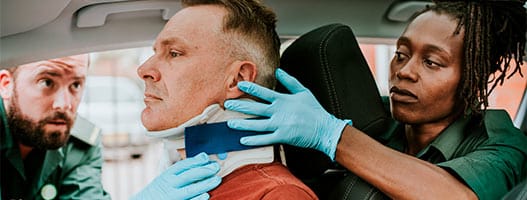
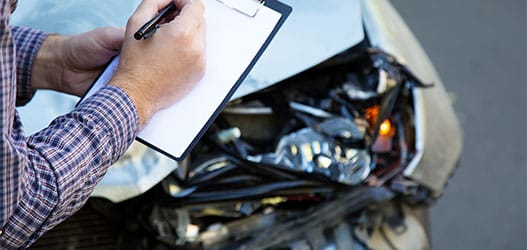
Gather Names And Contact Information Of All Parties Involved
After seeking medical attention, you should gather the names and contact information of all parties involved in the accident. This includes other drivers, passengers, and witnesses who may have seen what happened during the collision. It is important to document as much information as possible so that our Las Vegas motorhome accident lawyers can build a strong case on your behalf.
Take Pictures Of The Accident Scene
If you are able, take pictures of the accident scene. This can provide valuable evidence to prove who is at fault for the collision. Our Las Vegas RV accident attorneys will be able to use these photos to help determine liability and seek compensation from the responsible party.
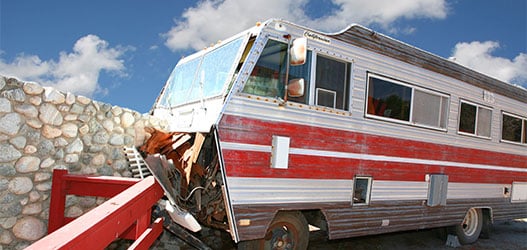

Report Your Accident To The Police
Finally, be sure to report your accident to the police. This will ensure that you have a formal record of what happened which our Las Vegas RV accident attorney can use to build your case.
Initiate A Free Consultation With a Recreational Vehicle Accident Lawyer In Las Vegas
If you have been injured in an accident caused by another driver, don’t hesitate to contact the Las Vegas rv accident lawyers at Benson & Bingham Accident Injury LAwyers, LLC. Our experienced personal injury attorneys are here to fight for justice on your behalf and help you get the compensation you deserve.


Determine a Fair Settlement For Your Injuries
When you work with the Lawyers at Benson & Bingham, Las Vegas RV accident lawyers will use their expertise to determine a fair settlement that covers your medical expenses and other losses. We understand how traumatic this experience can be and will work hard to ensure that justice is served for you and your loved ones. Contact us today to begin the process of filing a claim for compensation. Our Las Vegas RV accident attorneys are here to help you get the financial relief you need and deserve.
Consult With Our RV Accident Attorney
For A Free Case Evaluation
Types of Recreation Vehicles In Las Vegas
Experienced Motorcycle Accident Attorneys Serving Las Vegas For Over 20 Years
If you have been involved in a Las Vegas RV accident, don’t hesitate to contact the Las Vegas trailer accident lawyers at Benson & Bingham. We understand how complex these cases can be and will work tirelessly to get you the compensation you deserve for your injuries. With over 20 years of experience representing clients just like you, our Las Vegas motorhome accident attorneys are here to fight for justice on your behalf.
Class A Recreational Vehicles: Standard Buses or Trailers
These types of vehicles can range from standard buses to trailers, to fifth-wheelers. We understand the complexities of Las Vegas RV accidents and will fight for justice on your behalf. Don’t hesitate to contact us today to initiate a free consultation with one of our Las Vegas trailer accident attorneys. Let Benson & Bingham Handle Your Las Vegas Motorhome Accident Case.
Class B Recreational Vehicles: Vans and Cars on Raised Chassis
Usually referred to as camper vans, Class B recreational vehicles are the smallest RV class. If you or a loved one suffered an accident on a Class B RV, don’t hesitate to contact us. Our Las Vegas recreational vehicle accident lawyers will make sure that you get the compensation that you deserve for your injuries and losses.
Class C Recreational Vehicles: Cabovers Or Short Trucks on Tall Body/Chassis
Las Vegas motorhome accident attorneys at Benson & Bingham have extensive experience representing clients who have been injured in Class C recreational vehicle accidents. These types of vehicles are “cabovers” or short trucks on tall bodies or chassis. If you were involved in an accident on a Class C RV, don’t hesitate to contact us.
Types of RV Injuries HandledBy Our Vegas Personal Injury Lawyers
Spine & Spinal Cord Injuries
Las Vegas trailer accident attorneys at Benson & Bingham understand the complexities of spinal cord and spine injuries. We will take legal action on your behalf to make sure that you get the compensation you deserve for your medical bills, lost wages, and other losses.
Broken Bones, Strains & Sprains
Las Vegas RV accident attorneys at Benson & Bingham are here to help you pursue legal action for any broken bones, strains, or sprains that you may have suffered due to your Las Vegas RV accident. Contact Las Vegas RV Accident Attorneys At Benson & Bingham Law Group Today!
Burns & Amputations
Las Vegas RV accident lawyers at Benson & Bingham are dedicated to helping you get the financial relief you need and deserve after an accident. We understand how traumatic burns and amputations can be and will work hard to make sure that justice is served for you and your loved ones.
Whiplash, Head & Neck Injuries
We understand how devastating head and neck injuries can be. Our trailer accident attorneys in Las Vegas will take legal action to make sure that you get the compensation you deserve for your Las Vegas RV accident. To contact us today for a free consultation with one of our Las Vegas motorhome accident lawyers.
Bruises, Lacerations & Cuts
We understand how paniful, if not serious, bruises, lacerations, and cuts can be. We are here to make sure that you get the compensation you deserve after your Las Vegas RV accident. Don’t hesitate to contact our Las Vegas recreational vehicle accident attorneys today.
Traumatic Brain Injuries
Any kind of head trauma can have serious repercussions. Las Vegas RV accident attorneys at Benson & Bingham understand the complexities and long-lasting impact traumatic brain injuries can have in your life. We will take legal action to make sure that you get the compensation you deserve for your Las Vegas RV accident.
Why Hire Our Las Vegas RV Accident Attorneys?
An Award-Winning Law Firm That Excels In All Types Of Recreational Vehicle Accident Claims
At Benson & Bingham, our Las Vegas trailer accident attorneys understand the complexity of RV accident cases. Our Las Vegas recreational vehicle accident lawyers strive to provide clients with high-quality legal representation and excellent customer service. We have a proven track record of success in obtaining full compensation for our clients.
What Types Of Damages Can I Recover For My RV Accident Injury Case?
Fight For a Fair Settlement & Get The Maximum Compensation For Your Damages
Decreased Quality Of Life & Rehabilitation Expenses
We understand how life-altering these types of accidents can be and will work hard to make sure that justice is served for you and your loved ones. Our skilled attorneys are dedicated to helping you get the financial relief you deserve after an RV accident.
Disfigurement, Physical Pain And Suffering
Our Las Vegas RV accident lawyers understand the physical and emotional strains that a serious injury can have on your life. We are here to make sure that you get the financial compensation necessary for recovery, including medical expenses, lost wages, pain, and suffering.
Lost Wages For Time Off Work Due To Injuries
Las Vegas recreational vehicle accident attorneys are here to make sure that you get the financial compensation necessary for recovery, including lost wages. Our lawyers understand how daunting it can be to cope with the medical expenses and lost wages caused by an RV accident.
Property Damage & Repairs
An RV accident can cause a great deal of property damage, not only to the recreational vehicle but to the personal objects in or around it. Contact Las Vegas RV Accident Attorneys At Benson & Bingham Law Group Today.
Current & Future Medical Expenses
Our motorhome accident lawyers in Las Vegas have seen firsthand the scope of injuries an RV accident can cause, and how much of a financial burden it can be to the victim. Let us help get you the justice and financial relief you need and deserve.
Emotional Trauma
Being a victim in a Las Vegas trailer accident is a traumatic experience. Our experienced attorneys can help you recover damages for psychological disabilities, post-traumatic stress disorder, and depression. We are here to help you get the physical and emotional relief you deserve.
Meet Our Experienced Team Of Las Vegas RV Injury Lawyers
At Benson & Bingham, our Las Vegas RV accident lawyers are here to provide justice and help you get the maximum compensation for your damages. We have a proven track record of success in obtaining full compensation for our clients. Contact Las Vegas recreational vehicle accident attorneys today for a free case evaluation.
Meet the Attorneys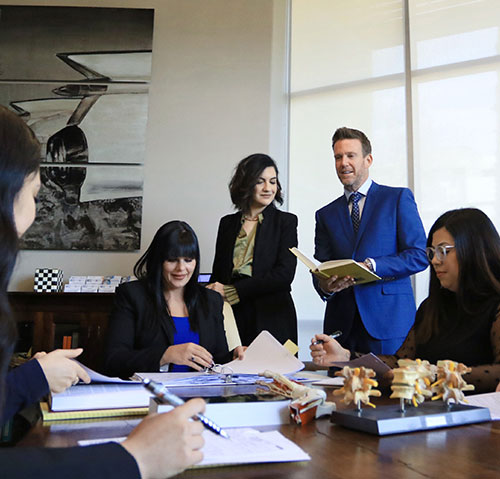
Client Testimonials
Las Vegas’ Most Trusted RV Accident Attorneys
I suggest using Benson & Bingham if you’re in need of an injury accident attorney! They have an amazing staff and made the entire process easy and stress free handling my case with compassion and a remedy of great efficacy!
I picked this place and I’m so glad that I did. Ida was very helpful and professional. If I had questions they were answered. I would definitely use them again in the future and I would definitely recommend them to anyone. Thank you for your service I appreciate it.
What I love about Benson & Bingham, especially from my attorney, Lina, I felt informed and cared for my health. She made sure I was ok at all times through my injury. I hate I had the accident, but it was comforting to know I was well taken care of.
Read More Reviews
Award-Winning Law Firm In Las Vegas
Benson & Bingham: Extensive Experience With Vehicle Accident Cases

Total Settled By Verdicts For Clients

Our Las Vegas motorhome accident lawyers have recovered $500,000,000 in personal injury cases and counting. We are ready to fight for a fair settlement in your case so that you can get the maximum compensation for your damages.
Car Accident

We understand the financial toll that a car accident can take on your life, and will work hard to make sure you get the justice and financial help you need. Our Las Vegas RV accident attorneys have recovered $2,500,000.00 on a recent car accident case.
Motorcycle Accidents

Our Las Vegas accident lawyers have been successful in obtaining justice for our clients who have suffered from a motorcycle accident. We have obtained $275,000.00 on a recent Las Vegas motorcycle accident case, and will strive for similar results for your claim as well.

Visit Our RV Accident Law Firm Near You

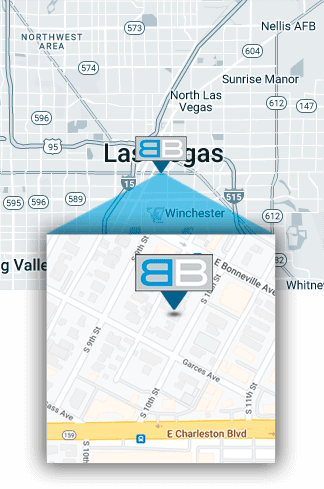
Las Vegas, NV 89101
At Benson & Bingham, our Las Vegas RV accident lawyers are here to provide justice and help you get the maximum compensation for your damages. Our law firm is conveniently located in Las Vegas, NV. Visit us today to learn more about how we can assist your trailer accident case.
Did Another Driver Crash Into You?
Contact Our Law Firm Today For A Free Consultation
Common RV Accident Locations CloseTo Our Accident Law Offices
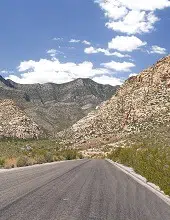
Red Rock Canyon
As a personal injury law firm in Las Vegas, we offer comprehensive legal services to individuals involved in RV accidents near Red Rock Canyon. We strive to help clients recover fair compensation & provide personalized, compassionate legal support.

Interstate 15
We provide expert legal representation to individuals involved in RV accidents near the Interstate 15 highway. We understand the complexities of RV accidents and work hard to ensure that our clients receive fair compensation for their injuries, lost wages, and damages.
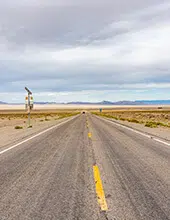
U.S. Route 95
We assist individuals impacted by RV accidents near U.S. Route 95. Our knowledgeable lawyers gather evidence, handle negotiations with insurance firms, and represent clients in court if needed. Our aim is to help clients receive fair compensation for their injuries, lost wages, and damages, allowing them to focus on recovery.

U.S. Route 93
We specialize in serving victims of accidents involving recreational vehicles (RVs) near U.S. Route 93. Our team of experienced attorneys is devoted to protecting your rights and fighting for justice. If you or someone you know has been involved in an RV accident near U.S. Route 93, contact us today!
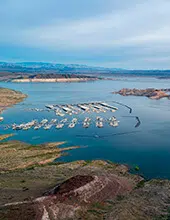
Lake Mead
Our experienced legal experts are here to help if you or someone close to you was involved in an RV accident near Lake Mead. We are committed to your rights and getting the results you deserve. Take action now and reach out for assistance.
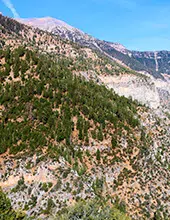
Mt. Charleston
We understand how difficult it can be to navigate an RV accident near Mt. Charleston. Our team of legal experts handle these cases with the utmost sensitivity and dedication, providing you with the highest compensation and ensuring your best interests are looked after. Reach out to us now and let us help you get back on track.

Echo Bay
If you’ve been in an RV accident near Echo Bay, Las Vegas, you need experienced legal help. Our team of professionals can help you get the compensation and justice you deserve. We provide dedicated service to help you move on from this difficult situation as soon as possible. Get in touch today.
Common Causes Of
RV Wrecks In Las Vegas
Uneven Or Overly-Loaded Rvs
Las Vegas RV accident attorneys understand that uneven or overly loaded RVs can cause serious accidents. We will do our best to ensure you get the compensation necessary for recovery, including medical expenses and lost wages.
Inattention & Distraction
Inattention and distraction are often the main cause of Las Vegas RV accidents. Our lawyers will take all necessary steps to ensure you get the justice you deserve, as well as maximum compensation for your medical expenses and lost wages.
Poor Weather Conditions & High Winds
Las Vegas RV accident attorneys have seen firsthand the damage that high winds and poor weather conditions can cause. We are here to help you get the financial help you need to cover medical bills, lost wages, and other damages associated with this type of accident.
Inexperienced RV Operators
Reckless driving is often defined as driving in a way that shows a disregard for the safety of others. This can include things like speeding, tailgating, or weaving in and out of traffic.
Blind Spots
While not as large as a trailer truck, RVs have bigger bling spots than regular cars and vehicles, and they can cause serious accidents on the road and freeway. We are here to get you the financial help you need to cover medical bills and other damages associated with this type of accident.
Manufacturing Defects
Las Vegas RV accident attorneys are experienced in understanding the complexities of manufacturing defects and how they can cause serious accidents. We will do our best to ensure you get the justice and financial compensation you need for recovery.
Runaway Trailers
Runaway trailers can cause serious accidents to more than one car or victim. We have seen first-hand how devastating this type of accident can be, and we are here to fight for a fair settlement in your case so that you can get the maximum compensation for your damages.
Frequently Asked Questions About RV Accident Cases In Las Vegas
Who Can Be Held Liable In an RV Inury Accident Claim?
In an RV injury accident claim, any person or entity whose negligence contributed to the incident can be held liable. This includes drivers, passengers, and owners of the vehicle. It is important to note that different jurisdictions may have varied rules regarding liability in these types of claims. Additionally, if the accident involves another driver that is not part of the RV’s party, they could also be held liable for damages caused by their negligence.
What Are The Advantages Of Having An RV Accident Attorney To Represent My Case?
Having an experienced RV accident attorney on your side is invaluable to ensure that you receive a fair and just settlement. An attorney can help navigate complex legal procedures, gather evidence to support your claim, advocate for the maximum amount of compensation available under the law, and negotiate with insurance companies. Furthermore, attorneys who specialize in RV injury cases are familiar with the latest laws and regulations, as well as common settlement agreements used by these defendants. With their knowledge and experience in this field, they can better protect your rights and fight to get you the compensation you deserve.
What if the Other Driver Does Not Have Insurance?
In the event that the other driver does not have insurance, it is important to take immediate action. Depending on where you are located and the type of coverage you have, there may be additional options available to seek compensation. If you were injured in an accident caused by an uninsured driver, you could file a personal injury claim with your own insurance company or pursue legal action against the other driver. Additionally, some states offer protection for victims of accidents caused by uninsured drivers through their Uninsured/Under-Insured Motorist Laws. Knowing your rights and acting quickly can ensure that you get the compensation you deserve for any expenses incurred due to an accident with an uninsured driver.
How Long Will It Take To Resolve My RV Accident Case?
The length of time it takes to resolve an RV accident case will vary depending on the specifics of each case. Generally, cases involving complex legal issues, or those with severe injuries that require extensive medical care may take longer to settle than minor accidents. A qualified RV accident attorney can help review the facts and develop a strategy for obtaining a favorable outcome in the shortest amount of time possible. Additionally, an experienced attorney will be familiar with common settlement agreements used by insurance companies and other defendants, and are able to negotiate on your behalf for a prompt resolution.
How Is Fault Determined in an RV Accident Case in Las Vegas?
In Las Vegas, fault in an RV accident case is determined by looking at the facts of the incident. If a court finds that one of the drivers was negligent and that negligence caused the accident and any resulting injuries, then they can be held liable for damages. Common types of negligence include distracted driving, reckless driving, speeding, disobeying traffic laws, or failing to maintain safe following distances. The court will also consider evidence such as eyewitness accounts and physical evidence from the scene to determine who is at fault.
Can I Negotiate a Settlement With the Other Party’s Insurance Company After an RV Accident in Las Vegas?
Yes, you can negotiate a settlement with the other party’s insurance company after an RV accident in Las Vegas. An experienced attorney can review all available evidence and help determine the best strategy for obtaining a favorable outcome. Additionally, they can review any settlement offers and negotiate on your behalf to ensure a fair resolution of your case.
What if the Other Party Denies Fault or Refuses to Pay a Settlement?
If the other party denies fault or refuses to pay a settlement, you may have the option of filing a lawsuit against them. An experienced attorney can review the facts surrounding your case and determine if there is sufficient evidence to support a claim of negligence. If so, they will be able to advise you on the best course of action to pursue in order to receive compensation for any damages resulting from the accident.
Can I File a Claim if I Was a Passenger in the RV at the Time of the Accident?
Yes, if you were a passenger in the RV at the time of the accident, you may be eligible to file a claim. Depending on the circumstances surrounding the accident, you could pursue a claim for personal injury or property damage. It is important to document any injuries you might have sustained and any damage to your vehicle or belongings. An experienced attorney can review all available evidence and advise you on how best to move forward with filing a claim.
Can I File a Claim if I Was a Pedestrian or Cyclist Involved in an RV Accident in Las Vegas?
Yes, if you were a pedestrian or cyclist involved in an RV accident in Las Vegas, you may be eligible to file a claim. Depending on the circumstances of the incident, you could pursue a claim for personal injury or property damage. It is important to gather any relevant evidence from the scene and document any injuries you might have sustained. An experienced attorney can review all the facts of your case and advise you on how best to move forward with filing a claim for compensation.






